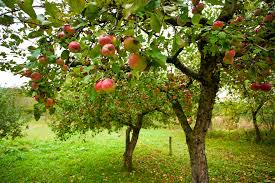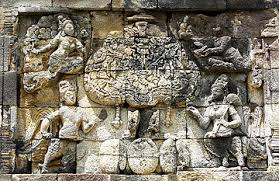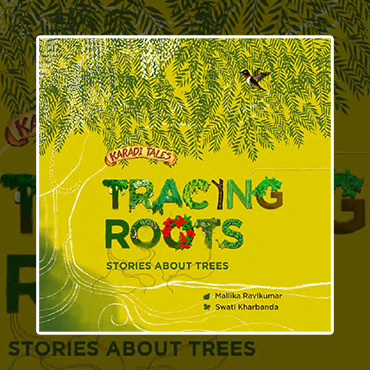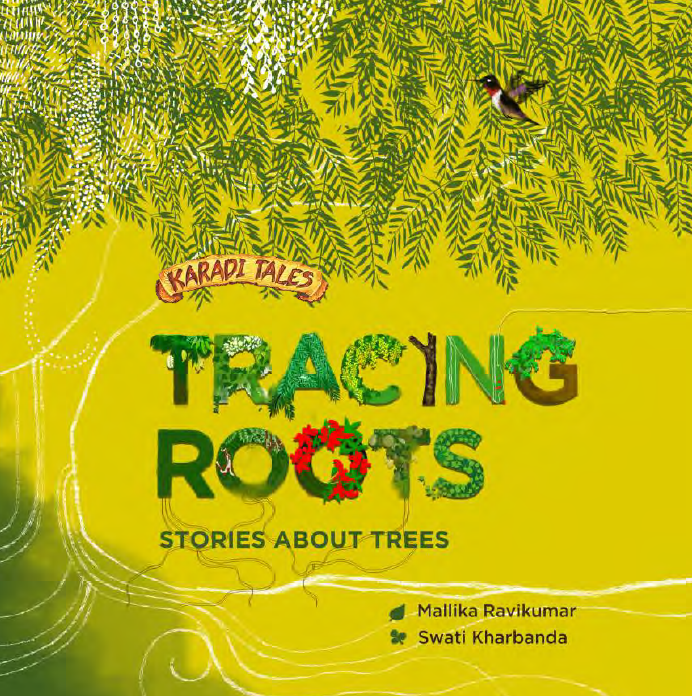I saw this beautiful Banyan Tree in Bhubhaneshwar in Orissa. Under it were half a dozen shrines, a temple made of bricks and tiles, a tea stall, a parking lot and a large raised platform where my friends and I sat having chai and biscuits as we watched the world go by.
This tree is not special. Nor is it something peculiar about Orissa. One sees many trees like this cross India. Painted with images of gods. Turned into places of worship. Circled by coils of thread. Festooned with bangles, threads, slips of paper. Surrounded by lamps and agarbatis.

Trees turned into shrines.
And therein lies the answer in the quest to finding the first gods.
The Very First Gods
The cult of tree worship, it is said, is as old as civilisation. Anthropologists say that almost the first objects to be held in reverence and worshipped across cultures in the world were trees.
And archaeological evidence seems to agree, suggesting that trees were held to be sacred in various parts of the world and their worship was a common practice.

Tree Worship – Why and How?
Trees provide humans and other creatures with food, shade, timber, oxygen and several other gifts.
Trees bind the soil and shield the land against heavy winds and storms.
In a storm, the tree bows and manages to survive despite heavy winds.
Source of Food. Giver of Unending Resources. Protector against the Elements.
It is no surprise therefore that early humans saw these creatures as embodiments of the Divine.
Given the abundance with which they shower us, trees gradually became symbols.
Of Strength. Of Goodness. Of Humility. Of Self-sacrifice and Generosity.
The Tree Trinity
Those who have studied the phenomenon say that tree worship in India can be categorised under three categories
- Kalpa Vriksha
- Chaitya Vriksha
- Sthala Vriksha
Kalpa Vriksha
The Kalpa Vriksha is the wish fulfilling tree of life.
It finds its earliest mention in the Rig Veda and is also to be found in several Puranic tales.

This tree is said to have been one of the gems that came out of the ocean during the churning (Samudra Manthan). It is said to have been taken away to Indralok by Indra, the king of the heavens.
Chaitya Vriksha
The chaitya vriksha is a large tree of the village that is seen as a protector of people and a provider. Over time it acquired various connections and came to be seen as abodes of devas, yakshas and rakshashas.
The earliest temple is said to have been in the form of this tree, with a deity beneath its bowers. The structural temple – made of stone, came come much later.

Sthala Vriksha
The sthala vriksha stands on a raised platform and is generally situated in the outer enclosure of a temple.
Devotees offer coconuts, flowers and lighted lamps under its trunk and worshippers often tie strings or other objects to the tree to fulfil a vow or wish.
Do you know every major temple has a sthala vriksha associated with it? And it plays a key role in the ecological preservation of the region. For more on famous sthala vrikshas, sacred groves and to know about my soon-to-be-released book for children on Tree Stories by Karadi Tales, SIGN UP to the site to stay updated.



